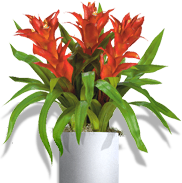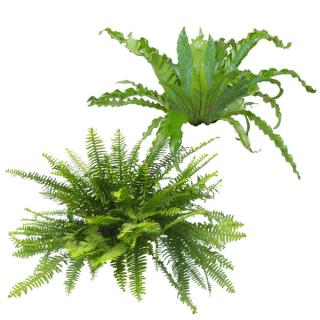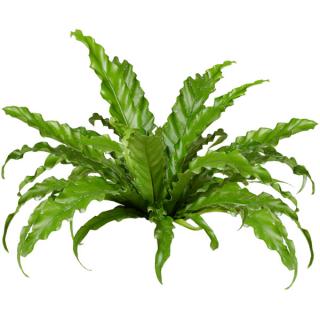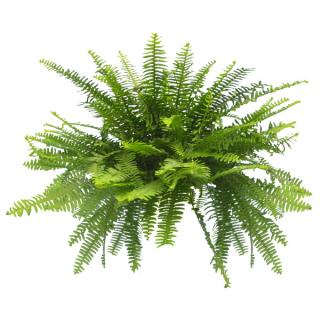Ferns
See all Indoor Tropical Plants
Ferns, whether native to our temperate region or endemic to the warm tropics, are forest floor plants that thrive in a shady environment. These plants are often quite elegant and are frequently hung in baskets, or planted in smaller containers as solo specimens. They can be used to provide contrasting leafy textures among other tropical plants, sometimes as ground cover or edging in a large plant display.
Adapted for shade, ferns are generally happy in most low light indoor environments. They typically prefer more humid conditions than are found indoors, but the varieties cultivated for indoor use are hardy and more tolerant of normal indoor humidity ranges.
In prehistoric times, ferns dominated all of the other plants on land in both abundance and variety. They reigned supreme starting about 360 million years ago (during the Devonian Period) until about 120 million years ago (during the Cretaceous Period when dinosaurs lived). However, every lineage of the ferns — with exception of one — was driven to extinction in the throes of competition from newly emerging flowering plant groups, many of which still dominate the plant kingdom to this day. Botanists believe the lone group of ferns that survived was able to diversify and now makes up every species of living fern today. New research shows that this fern group may have survived due to an accidental mix-up of genes with a group of plants known as hornworts, which have the ability to survive in deep forest shade by utilizing unused red light wavelengths.




